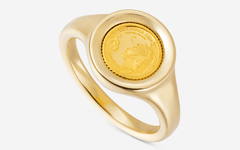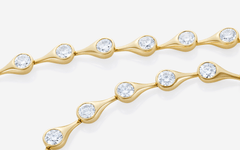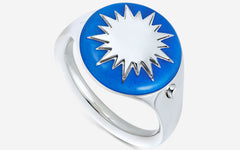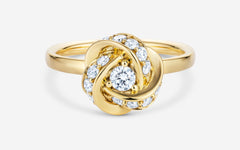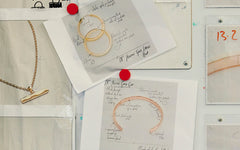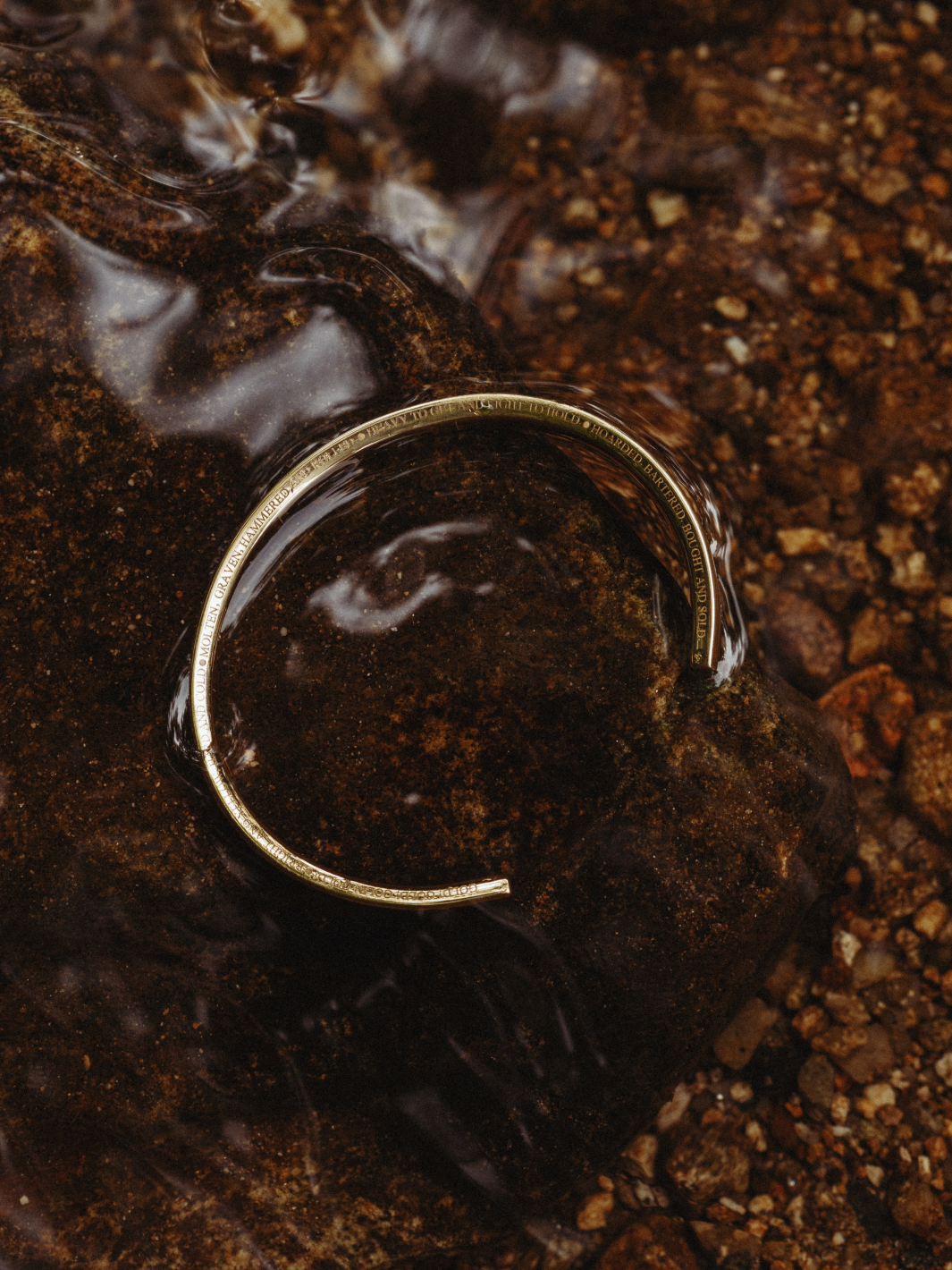The inspiration for the collection is the story of the redesign of British coinage. Most people take for granted the design of a coin and don’t know the history behind its change, and the collection tells the two parts of the story. Before the re-design in the 17th century, silver and gold coins were like flat pancakes and clever people started to realise that the value was in the visual circle, rather than the coin itself, so they began to trim the coins smaller and smaller to steal the valuable material from the outside edge.
There is a reference I found in my research, which is of “The Toenail Hoard” from the Forest of Dean, a tangled, chaotic collection of the stolen edges of coins. There were harsh consequences of stealing the edge of coins at the time, it was considered an act of treason, so you were risking your life to do so. Yet it was happening on such an industrial scale that the value of the British currency at that time, which continued to circulate at face value, no longer related to the decreasing amount of precious metal in the coins. Our money was worth what it said it was. It became such an important issue coins had to be reworked and redesigned.
The image of the chaos of the stolen hoard, and the order of the milled edge with its solid depth and controlled rim around the coin, is what’s represented in the designs.

How did the practice of coin clipping translate into your designs?
It’s a collection of two parts. The first part of the collection tells the story of the clipping itself: a small capsule collection of high jewellery which features a statement necklace piece, telling the story of coin clipping through beautiful cascading chaotic twists of clippings handmade by our in-house fine jeweller, Claude Simonon. We struck a token coin that I designed which illustrates the consequences of the act of coin clipping faced by those practising it at the time– the imagery is deconstructed and hidden through a process of manually clipping in the way it would have been done, to give an authentic feeling to the curls it produces, perfectly replicating the reference that I found in the Forest of Dean hoard. The curls were then manually hand-curated and placed individually so that they came together to form a sense of fluid motion within the piece, with the theme explored further in a complementary pair of cascading earrings.
How did you interpret the subsequent redesign of the coinage in the collection?
The second half of the collection is more graphic, reflecting the sense of control that came from the new depth and rim motif of the milled edge. This collection is also much more about detail, movement and geometry. There are pieces which reference the clipping - but here as a spiral, similar to the shaving of a pencil sharpener, as if a machine has cut the rim of a coin up and it's curled around to create a shell-like form. Then there are designs where I have used the same ‘shavings’ to create squares - inverted shapes where the lines get pulled inside out and have a surreal quality to them that feels graphic, but also familiar because of the referencing of that very familiar 1990s pound coin.

Why was the 1990s pound coin a key reference for the collection?
When I was looking at references for coins that I wanted to represent the depth and rim incorporated in the redesign, the coin I was most drawn to was the old style £1, which I remembered from the nineties. For me personally, it has very nostalgic and positive connotations - for example, when I was younger it was the one you wanted for your pocket money, it meant 100 penny sweets and, as you got older, represented £1 a pint. It’s just very visually iconic and has a really nostalgic feel to it.
Around the rim of that coin was the Latin inscription “Decus et Tutamen”, which translates as “An ornament and a safeguard” and I really liked that. It fitted with what I wanted to portray for the jewellery for The Royal Mint and the idea of it being decorative but also holding its value - a kind of safeguard of investment. So those things fell together quite organically.
